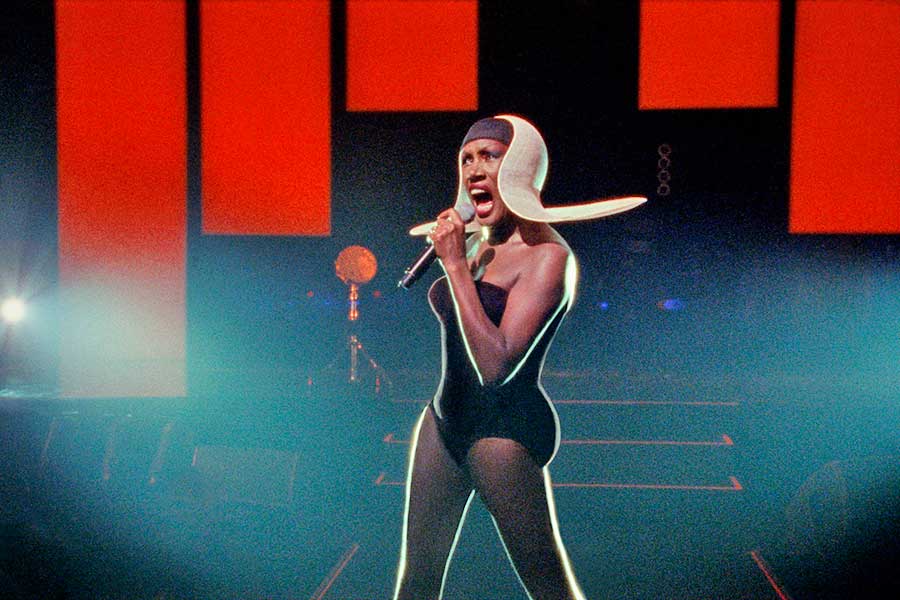Grace Jones, the androgynous singer/songwriter, supermodel, actress and iconic queer icon, is the subject of the Sophie Fiennes documentary, “Grace Jones: Bloodlight and Bami” opening at the Landmark Ritz at the Bourse May 4.
The film alternates between scenes of Jones performing on stage with observational footage of the icon with her family in Jamaica; at work on her album, “Hurricane” ;and in private moments. Fiennes’ deliberate approach reveals more about the unconventional Jones than a conventional documentary tracing her life and career might.
In a recent phone interview, the filmmaker explained how she used songs to punctuate the footage of Jones off stage. “I wanted a shift with her performance — the theatricality, simplicity, and elegance and geography of the stage, since I was going all over the world with her,” Fiennes said. “It was an anchor point to construct the film. I imagined the documentary as a musical, using the structure and form of the song to communicate the narrative.”
For example, Jones’ performance of her hit “Love is the Drug” is juxtaposed with her expressing feelings about lacking love.
Fiennes added that “Bloodlight and Bami” emerged spontaneously. “I did the sound and camera myself — and I was facilitating the adventure with her, capturing these moments. She’s a consummate performer. She’s not resisting the camera. She knows the stakes. She’s accepting them and agreeing to not be in control. That’s a kind of freedom.”
While Jones comes across as a powerful businesswoman — justifiably angry with some career concerns — Fiennes commended her for fighting long and hard to be paid well. “She no fool,” the director said, mimicking Jones demanding, “I want everything the men get.”
Fiennes said she only tangled with her subject once during the five years of shooting, during discussions of partnering with the BBC. Jones has an aversion to the “corporate mentality” and feared Fiennes would lose control of the film with third-party financiers.
“I learned how to argue, hard. Grace said” — and Fiennes again imitated Jones’ distinctive voice — “‘You’re pretty fierce!’ and I said, ‘Who do you think I learned that from?’”
Even when Jones tried to provoke a response out of Fiennes during filming with some vulgar remarks, the director tried to remain unflappable. “I didn’t want to interrupt the moment. I knew giggling would ruin my shot.”
As for what makes Jones so alluring and intriguing, Fiennes recalled seeing her image for the first time on the cover of her “Island Life” album.
“As a body-shy 14-year-old, I was thinking: What kind of a woman is that? It was wild to me. This person who is powerful in her nakedness and proud, and has a sense of humor — there were all these different signals.”
Fiennes first saw Jones on “The Russell Harty Show,” where Jones was asked which perfume she was wearing. “She said, ‘Body odor,’” Fiennes said, calling the episode “brilliant and transgressive and a catalyst for cutting through auto-speak of a chat show. As a woman, she was claiming her smell was something beautiful. She was clever and fascinating in her whole attitude.”
Fiennes observed that Jones is someone who “calls the dance herself,” and not one of those women “who line the walls of the room and are asked to dance. She owns her erotic self; she’s not waiting to be desired in the classic sense. She’s part of the collective unconscious in the LGBT community. Aspects of her are frightening to straight men — they must wonder, What will she demand of me?”
Such is the power and beauty and brilliance of Grace Jones captured in the film. As for why she made this documentary now, Fiennes responded, “She’s become more fascinating. Grace is bigger now than she ever was.”

